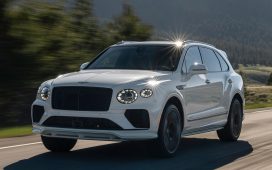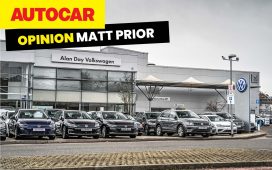By Kevin Armstrong
Rumors are circulating that Tesla is planning to rev up the base battery of its Model 3. Reports from China hint at an upgrade from a 60 kWh to a 66 kWh battery pack, promising a 10% boost to the EV’s driving range. The speculated move is tied to Tesla’s ambitious Project Highland, expected to introduce an array of improvements to the Model 3’s design and performance.
Model 3’s Battery Upgrade: More than Just a Power Boost
The upgraded battery is reportedly the result of a collaboration with CATL, utilizing their M3P lithium iron phosphate (LFP) battery packs. While this technology promises greater energy storage, it also aligns with Tesla’s ongoing commitment to production efficiencies and cost reduction.
In the Model 3’s early stages, its base variant, the Rear-Wheel Drive, had a 55kWh battery, which Tesla later bumped up to 60kWh. This new upgrade would add another 6kWh, potentially giving drivers an extra 30 miles (50km) of driving range.
But the benefits of this battery upgrade don’t stop at distance. The M3P battery packs are also cheaper, hinting at an upcoming reduction in the Model 3’s production costs. This move could mean more competitively priced Tesla cars on the market, boosting their appeal to a wider demographic of eco-conscious drivers.
Impact on Tesla’s Market Position
The battery upgrade comes at a critical time. Despite the Model 3’s substantial sales numbers, Tesla faced a slight slump in sales in China last year. However, this upgrade, alongside other anticipated changes under Project Highland, could give the Model 3 the much-needed revitalization to rebound and continue to dominate the EV market.
Tesla’s consistent pattern of upgrading batteries with every model redesign has been a key driver of its competitive advantage in the electric vehicle market. By introducing higher capacity batteries in Model 3, the company continues to push the boundaries of EV technology and solidify its market position.
The revamped Model 3, equipped with the new 66kWh battery, could set a new standard for range in electric vehicles. Although Tesla has not officially announced any of the changes associated with Project Highland, sightings of test vehicles and reports from insiders fuel anticipation for the Model 3’s imminent overhaul. Enhanced drone restrictions at Giga Shanghai suggest that the company might be testing the vehicles on factory grounds.
If these rumors hold, the upgraded Model 3 will offer a greater driving range and reaffirm Tesla’s position as the trendsetter in the EV market. All eyes will undoubtedly remain on Tesla as it continues to drive the future of electric vehicles.
By Kevin Armstrong
Tesla has revolutionized the automotive industry without spending a dime on advertising. Known for its unconventional marketing approach of relying on word-of-mouth and the popularity of CEO Elon Musk, the company has now begun to advertise – a first in its history.
A new approach to marketing sees Tesla experimenting with Google ads. Will this move increase Tesla’s visibility and catapult it to the top of search results? The ads primarily appear in the UK, with some appearing in the U.S. in relation to their solar products. Intriguingly, the focus is on search engine advertising, shying away from traditional banner ads.
Setting the Stage for a Social Media Explosion?
Given Tesla’s flair for innovation, surely there must be more than this. Considering Musk owns Twitter and Tesla has several videos on YouTube promoting products, there has to be a bigger show coming. Dog Mode (video below) and the Bioweapon Defense Mode videos are standout for videos that could easily be made into commercials that run on Twitter or even conventional tv advertising.
Decoding the Advertising Decision: Are Sales Down or Production Up?
With Tesla’s inventory at its highest this year, the question arises: Is this a response to slowing sales or ramped-up production? As Tesla continues to expand and accelerate the pace in its new factories, they have set a goal to sell 2 million vehicles this year. To meet this target, building a bigger demand base via advertising seems a smart move.
The Heavy Wallets of Auto Makers: A Look at Advertising Expenditure
To put things in perspective, let’s glance at the amount major automakers spend on advertising. According to Statista, General Motors invested nearly $2.7 billion in advertising in the U.S. in 2022. Ford followed with about $2 billion, and Stellantis, Toyota Motor, and Honda Motor exceeded a billion.
As Tesla breaks into this arena, the size of its ad spend will be interesting to watch. It’s also worth noting how their foray might impact the shift of advertising budgets from traditional fossil fuel-powered vehicles to electric ones.
Is this just the beginning? Only time will tell how Tesla’s new advertising strategy will shake up the auto industry. With their commitment to innovation and change, Tesla is poised to rewrite the advertising playbook, electrifying their way to the top of the search results and beyond.
By Kevin Armstrong
In a significant move for the EV industry, SAE International, formerly the Society of Automotive Engineers, is to set performance standards for Tesla’s NACS (North American Charging Standard) connector.
To expand the compatibility of the proprietary charger network beyond Tesla vehicles, this move has the potential to redraw the boundaries of the EV charging ecosystem. Until now, Tesla’s exclusive NACS connector was engineered for its global Supercharger network, consisting of approximately 17,800 Superchargers in the US alone.
SAE’s Role in Ensuring Standardization and Compatibility
In response to the significant shift towards NACS, SAE has decided to set the stage for this connector’s future. The standards proposed by SAE will dictate how the plugs interface with charging stations, establish charging speeds, and set requirements for reliability and cybersecurity. Although the decision seems to potentially mark the end of the road for new CCS1 charger plugs, the thousands of existing CCS-enabled EVs guarantee this design won’t disappear soon.
A spokesperson for SAE has clarified that the organization is not choosing the NACS connector over CCS but responding to its widespread adoption. The goal is to ensure that the most popular charging system is standardized and compatible with a wide range of EVs.
Consumer Demand Drives Major Shift in Charging Standards
Interestingly, the transition toward standardizing the NACS connector appears to be primarily consumer-driven. The number of NACS-equipped vehicles on the road significantly outweighs those with CCS connectors, nearly two to one. Given the technical challenges and infrastructure issues encountered by alternative charging networks such as Electrify America, ChargePoint, and EVgo, it’s no wonder that most EV owners favor Tesla’s reliable Supercharger network.
Reacting to this trend, major automakers, including Ford and GM, have announced their plans to align with Tesla’s charging system by manufacturing EVs equipped with NACS connectors. This week, Volvo made a similar announcement, signing an agreement to join Tesla’s Supercharger network starting in 2025. It’s important to note that while automakers won’t be charged a licensing fee for adopting NACS, EV owners will still have to pay to use Tesla’s charging stations.
This new chapter in the EV charging story signifies a more unified future that is not just about driving electric vehicles but about making electric driving more accessible to all.












